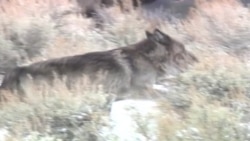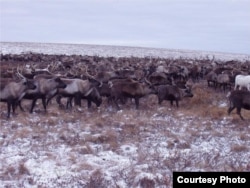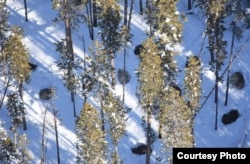Many scientists say the Earth is in the midst of its sixth mass extinction. The soaring rate of species loss is blamed largely on us, with climate change, pollution and human encroachment on animal habitat playing roles.
In response, some conservationists say introducing new plants and animals or reintroducing old ones will slow the trend.
Now, a new study in the journal Cell Biology warns that such "rewilding efforts" may harm the environment in unintended ways.
But that hasn't stopped conservationists from trying. European bison imported from Poland now roam Denmark's Baltic island of Bornholm in places where the animals haven't lived for thousands of years.
Rewilding is also playing out on a nature preserve in a remote part of Siberia at Pleistocene Park, established in 1989. Wild horses, oxen and reindeer are living there for the first time since the last ice age.
Ice-age landscape
Russian scientist Sergey Zimov runs the nearby Northeast Science Station and is one of the park's founders. "A few years ago there were no animals here," he said. "Today they are here and there will be more and more each year."
The experiment aims to re-create an ecosystem that disappeared 10,000 years ago. Zimov said the animals would turn the tundra into a grassland. "Horse, musk ox, reindeer will break the bushes. They will eat them. They will fertilize the soil. The grass will begin to grow. Then most of the trees will dry up, and there will be meadowlands of steppe vegetation."
But that's a long way off. Currently, the park supports fewer than 200 animals.
University of Copenhagen ecologist David Nogues said such projects might have dangerous consequences. "We cannot predict the consequences of this new conservation approach," he said.
One of the main concerns is that some of the animals in these environments have adapted to their new conditions. Throwing long-gone animals back into the mix could further disrupt an already stressed ecosystem.
Writing in Cell Biology, Nogues urges using extreme caution in rewilding to save wild places, "to understand in which way the ecosystem works, how it might react when you introduce a new species, what are the economic costs of rewilding compared to other more classic conservation approaches."
Wolf recovery
The recovery of wolves in America's Yellowstone National Park is often hailed as a rewilding success story.
In the mid-1990s, 91 Canadian wolves were released in the park, seven decades after they had been systematically exterminated. The population has multiplied fivefold. Project manager Doug Smith said the wolves are triggering an unexpected ecological chain reaction.
"Weary of wolves, elk no longer linger here," he said. "That allows the willows to grow and sets other changes in motion. Songbirds, moose, muskrat, mink — all these animals benefit when the willows come back."
While wolves are closely monitored in Yellowstone, their expansion outside the park has ranchers up in arms. They say cattle losses have increased with the wolf population.
Rancher Richard Kinkie said that because wolves are federally protected, he has few options, "Certainly I would like to see the controls loosened up on us, so we can deal with wolves," he said.
Fight threats first
Nogues said politicians and the public must consider the best science before implementing any rewilding program.
He argues that protecting biodiversity and reducing deforestation, climate change and invasive species are better initial steps to avoid the potential impact of mass extinctions.














